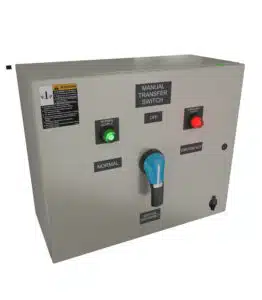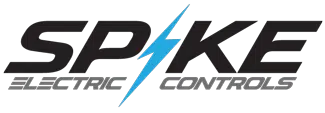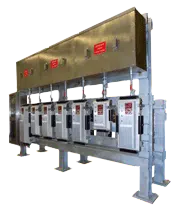These days, most homeowners prefer having a generator to stay prepared for unexpected blackouts caused by natural disasters or other unforeseen circumstances. Unfortunately, many of them do not invest in a transfer switch. They often use extension cords to power appliances from the generator.
 The use of extension cords with generators is best suited when it comes to powering appliances located outside the house. For interior appliances, using an extension cord can be extremely dangerous.
The use of extension cords with generators is best suited when it comes to powering appliances located outside the house. For interior appliances, using an extension cord can be extremely dangerous.
The wiring may force you to keep windows or garage doors open, which poses security risks. The toxic carbon monoxide from the exhaust of the engine may also enter the house. Your appliances and the generator may suffer damage as well.
Windows and door openings may chafe the cords and expose wires, increasing the risk of electric shock and/or fire hazards. Apart from this, you can only power very few appliances that way. Thus, it’s better to install a transfer switch.
What Is A Transfer Switch?
An electrical switch with the purpose of switching a load between two different power sources is known as a transfer switch. It ensures both sources do not supply the load at the same time, reducing the risk of the sources mixing or back feeding into each other.
There are two types of transfer switches. The automatic transfer switch senses when the power source stops supplying the load and triggers itself. In the case of manual transfer switches, someone must physically operate the switch to change the power source.
How Does A Manual Transfer Switch Work?
A manual transfer switch connects the generator directly to the electrical circuits allowing you to run the essential appliances without any extra wiring in the house. You should consult a professional to install the manual transfer switch because it can get complicated for the inexperienced.
First, the manual transfer switch is connected to the required electrical panel circuits. A power inlet box is installed on the side of the house, and this is wired to the transfer switch.
The generator is plugged in the power inlet box in the event of a blackout. Then, manually triggering the transfer switch will connect the circuits to the backup power from the generator. These connections together form a unit called the power transfer system.
Manual Transfer Switches: Ease Of Usage
When the power is gone, you have to access the manual transfer switch and turn off all the connected circuits. After connecting the generator to the power inlet box, let the generator start and warm-up.
Head back to the transfer switch and switch the main breakers from the main power source to the backup power source. Power on the circuits one by one, starting with the one that holds the essential appliances. When the power is back, all you have to do is flip the transfer switch’s main breakers back to the main power source. Then you can turn off the generator and disconnect it from the power inlet box.
The manual transfer switch is sized to match the biggest outlet on your generator to get a full power load. About 6 circuits can be safely powered using a manual transfer switch connected to a 5,000-watt generator. Do consult the manuals and safety instructions carefully before using because different models may have different operating procedures.
Ways In Which Manual Transfer Switches Boost Safety
We have already established how using extension cords can raise numerous hazards. Let’s take a look at how manual transfer switches can take care of most of these issues while increasing efficiency:
- They connect directly to the circuits so you can power more appliances than an extension cord would allow without the risk of frying them.
- They have wattage meters that track how many appliances are being powered reducing the risk of overloading the system. It saves your appliances and generator from suffering damage.
- It enjoys connectivity to the entire panel and can be used to power heavy appliances if urgently required.
- In the case of a fluctuating power supply, you can easily switch to the backup power source to protect your appliances.
- In the case of long blackouts, it is easy to choose which circuits to power so that you can reduce your backup power consumption.
- They reduce the chances of electric shocks or fire breakouts.
- You won’t have messy wiring all over the house to trip on, and you won’t have to keep windows and doors open.
If you recently bought a generator or plan to buy one soon, you must understand by now that extension cords should be avoided at all costs. Invest in a manual transfer switch and let it simplify things for you. If you face a serious blackout in the future, you will be grateful for the peace of mind that the manual transfer switch brings you.


